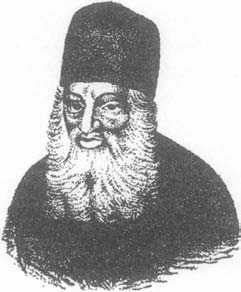Until the second half of the seventeenth century, the most important yeshivas were in Eastern Europe. Then they declined, and from the late seventeenth to the beginning of the nineteenth century, important centers of religious learning were established in Bohemia, Moravia, and several German-speaking countries. These yeshivas were dependent on the local communities, and were usually headed by the local rabbi. Outstanding among these heads of yeshivas

THE GREAT YESHIVAS IN EASTERN EUROPE AND THE MUSAR MOVEMENT
Period of activity:
® 18th century ® First half of 19th century © Second half of 19th century ® First half of 20fh century
Was Rabbi Jonathan Eybeschuetz, who taught in Prague, Metz, and Altona. The students came from all over Europe, and they were exposed to the different spiritual trends of the time, such as Shabba-teanism, on the one hand, and haskalah, on the other. In the nineteenth century, the “great yeshivas” were created in Eastern Europe.
The Lithuanian Yeshivas In 1803, Rabbi Hayyim ben Isaac (Vo-lozhiner) established a yeshiva in Volo-zhin that soon became the outstanding academy of its kind in Lithuania. The yeshiva (later named Etz Hayyim) differed from others in at least two respects. It was independent of the local community, being supported by contributions from all over Lithuania and beyond. And it accepted only long-term students, most

Rabbi Jonathan Eyeheschuetz.
Of whom came from outside Volozhin. Other yeshivas were established in Lithuania on similar principles, but none became as famous as Etz Hayyim.
The Musar movement developed out of the great yeshivas in the second half of the nineteenth century, under the inspiration of Rabbi Israel Lipkin of Salant, commonly known as Rabbi Israel Salan-Ter. The movement stressed pietism and ethical-moral conduct, combined with formal religious studies. It reflected the spiritual restlessness characteristic of East European Jewry at the time, but it was an inner-directed trend that paid little attention to the non-Jewish environment and concentrated on traditional Jewish issues.
Toward the end of the nineteenth century. Rabbi Israel’s influence gave rise to yeshivas of a new type, the Musar yeshivas. Existing yeshivas, too, adopted many of his ideas. The Musar yeshivas had a considerable influence on the religious life of East European Jewry.
The Hungarian Yeshivas Of far-reaching importance was the institution founded in Pressburg in 1807 by Rabbi Moses Sofer (the “Hatam
Sofer”). In 1857, the authorities recognized it as a rabbinical seminary, thus qualifying its students for exemption from military service. In 1866, that exemption was extended to students at other Hungarian yeshivas.
The Pressburg yeshiva inculcated in its students total and unquestioning adherence to classical Judaism, and, together with related yeshivas, it played an important role in the struggle against the Reform movement in Hungary. After World War I, parts of Hungary were incorporated into other countries. Pressburg, in the Slovakian “Oberland,” became part of Czechoslovakia (and was renamed Bratislava). The eastern part of the country was turned over to Romania. The original yeshiva continued to function, and several new ones were established in a now smaller Hungary.




 World History
World History









